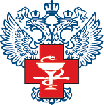 pirogov national medical surgical center
pirogov national medical surgical centernational center for researh and treatment of autoimmune diseases new jersey center for quality of life and health outcome research |
international symposium stem cell transplantation in multiple sclerosis: sharing the experience |
 |
 |
 |
 |
 |
 |
 |
 |
 |
 |
 |
 |
 |
 |
 |
| Immunoablative Therapy With Autologous Stem Cell Support in the Treatment of Patients With Poor Risk Multiple Sclerosis in the Czech Republic |
|
International Symposium "Stem Cell Transplantation in Multiple Sclerosis", Key-Note Lectures Book, 2009, p. 72-77 T. Kozak1, E. Krasulova2, E. Havrdova2, M. Trneny3, J. Pitha2, D. Dolezil4, P. Lhotakova1, P. Kobylka5, J. Fiedler6, V. Koza7 Introduction Intractable forms of autoimmune diseases (AID) follow a rapid course, with significantly shortened life expectancy. In these cases, immunoablative therapy with hematopoietic stem cell transplantation (HSCT) could be considered as new therapeutic option within clinical trials. The rationale for use of HSCT in AID is based on 1) experiments on animal models of human AID with successful both allogeneic and autologous bone marrow transplantation, 2) the effect of HSCT on concomitant AID in patients treated for hematological malignancies 3) results of phase I/II clinical studies with HSCT specifically for AID. In the case of allogeneic transplantation the donor?s replaces the whole immune system, which eliminates the remaining original autoreactive lymphocyte clone. This situation is sometimes called as "graft versus autoimmunity effect." Autologous HSCT is effective mostly through long-lasting quantitative suppresion of autoreactive lymphocytes, and theoretically, through self-tolerance induction by recapitulation of lymphocyte ontogeny. From the results mentioned above it is apparent that allogeneic HSCT is more attractive in the treatment of AID. However it does not prevent relapse as documented in the case of RA. The most important objection to the allogeneic approach so far is the significant risk of treatment related morbidity and mortality (15-35%) compared to the autologous setting. In majority of centres involved with autologous HSCT for malignant diseases, the treatment related mortality is below 5% and is further decreasing with use of peripheral blood haematopoietic stem cells. For this reason, first pilot phase I/II clinical trials and first phase III randomized studies with immunoablative treatment of AID involve autologous HSCT. Multiple sclerosis (MS) is an inflammatory autoimmune disease of the central nervous system. Auto-reactive CD 4+ T lymphocytes cross the blood-brain barrier and induce a complexinflammatory attack against myelinated axons. Patients who do not respond to conventional immunosuppressive therapy and/or immunomodulation have a poor prognosis. Those who progress to a stage where they are completly confined to a wheel chair have a 10 years survival of 30%. Their prognosis thus approaches that of malignant diseases. In patients heading towards this stage, immunoablative therapy may be considered, taking into account all the risks it represents. 37 patients with intractable form of MS were included in the phase I/II clinical trial involving the high dose chemotherapy with autologous peripheral blood progenitor cell (PBPC) support between 1998 and 2006. The patients were diagnosed with MS and treated at three Czech centers for multiple sclerosis and mobilzed and grafted at three Czech centers providing stem cell transplantations. Patients Patients were diagnosed with multiple sclerosis having met criteria for definite MS according to Poser?s criteria. Scoring of the disease involved the Expanded Disability Status Scale (EDSS). Patients were in non-reponsive secondary progressive phase (majority), later also patients with relapsing-remitting (1) and relapsing-progressive (5) phases of MS with advanced scores on the EDSS and rapid progression were included. Patients had typical findings on their brain MRI, and characteristic oligoclonal bands in their CSF. Previous treatment included combinations of corticosteroids with other immunosuppressive and immunomodulation therapy. Interferon beta, intravenous immunoglobulins, pulses of cyclophosphamide, high doses of methylprednisolone in pulses, azathioprine and mitoxantrone were used. All patients but one entered treatment on various doses of oral corticosteroids. The institutional ethical committees have approved the treatment protocol. The study has been designed as phase I feasibility and later phase II feasibility & efficacy clinical study. Neurological follow up The neurological assessement was done by experienced neurologist at inclusion and every 3 months using EDSS (Expanded Disabillity Status Scale) scoring, videotaping before PBPC mobilisation. Brain MRI was scheduled before PBPC mobilisation and every 12 months ( +1) after transplantation, or at deterioration. However the compliance with MRI was not full for various reasons. Immunological and molecular monitoring Flow cytometry : CD 3+, CD 4+, CD 8+, CD 4+45 RA, CD 57+, HLA DR +, CD 19+, CD 20+ Molecular biology: Vb chain TCR restriction (mRNA PCR), samples were frozen for future analysis. Methods and results 33 patients underwent high dose conditioning BEAM. T cell depletion in vitro was performed in 20 grafts depending on number of harvested progenitors and available resources. 13 patients with not purged graft received in vivo ATG 4mg/kg i.v. D+1, D+2 after PBPCT. In 3 patients PBPC mobilization failed (cyclophosphamide 4g/m2 + G-CSF). One patient refused transplantation after improvement in disability following mobilization. Median follow-up is 60 months (12 -108). Median EDSS (Expanded Disability Status Scale) of grafted patients at the time of inclusion was 6.5 (5.0-8.5), median EDSS of grafted patients at the last follow up was 7.0 (6.0-10.0). Three patients died 31 and 58 and 60 months resp. after transplantation because of progression of MS and the cause not related to transplantation, respectively. Two patients were lost for follow up. There was no treatment related mortality. At last follow up, the significant improvement (by 1.0 point on EDSS) remains in 1 patient, stabilisation of the disease occured in 23 patients (70%), in 9 patients disability significantly worsened (by 1.0 point on EDSS). In 3 patients transient significant neurological improvement lasting 12-30 months occured. The development of disability between the group that was grafted with in vitro purged graft and the group with ATG i.v. did not differ significantly. The cumulative survival without significant worsening was 80% in the group with purged grafts and 64,3% in the group without purging in vitro (p=0.178). Among 4 mobilized but not transplanted patients 1 improved by 1.5 point on EDSS, 3 patients worsened by 1.0 point. Three life threatenning serious adverse events (SAE) related to transplantation were observed, two of them early, one as a late SAE (100 days after transplantation). The first early serious adverse event was a respiratory failure after the onset of mucositis in the male patient with severe pontomesncephalic impairment. The second early SAE was a sepsis with respiratory failure following bilateral pulmonary hemorrhage in a female patient. The course of this second patient was further complicated by multiple intrahepatic abscesses Enterococci spp. positive. Both patients needed temporary artificial ventilation and after the proper antibiotic treatment recovered. Severe bleeding related to the inhibitor of FVIII occured in 1 patient 15 months after the transplantation as the late SAE. Remmission has been achieved after the immunosuppressive therapy. Conclusions 1. Immunoablative therapy with PBPC support in MS is feasible procedure and significant majority of otherwise intractable patients may at least stabilize their disability. We consider the results to be promising but requiring confirmation in a randomized trial involving also less handicapped patients. The risk of the procedure can be minimized by detailed individual risk assessment before the inclusion and patients with severe impairment (e.g. patients with severe brainstem impairment, etc.) should be excluded from this kind of treatment. 2. According to our results the in vitro purging of the graft has no significant role in the management of patients with multiple sclerosis treated with autologous HSCT. 3. PBPC mobilisation failure might be associated with previous cytotoxic therapy. This work was supported from the Czech Ministry of Health (grant IGA MZCR NR/9375-3/2007). |
|
© KMart |
(last update) 28/10/2009 |